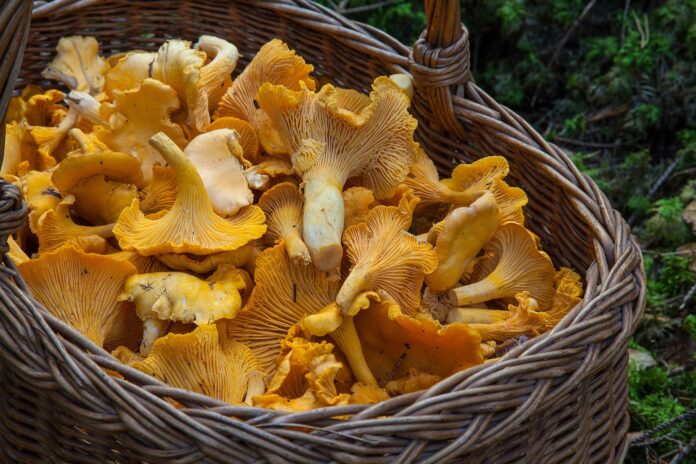Mushroom cultivation is an exciting and rewarding hobby that can provide a sustainable source of fresh and nutritious food. In addition to their culinary value, mushrooms have also been used for medicinal purposes for centuries. In this article, we will explore the basics of mushroom cultivation. Including the different types of mushrooms, the steps involved in growing mushrooms, popular mushroom species to cultivate, and the benefits of mushroom cultivation.
Types of Mushrooms
Mushrooms can be broadly classified into three categories: edible mushrooms, medicinal mushrooms, and poisonous mushrooms. Edible mushrooms are those that are safe to consume and are commonly used in cooking. Examples of edible mushrooms include white button mushrooms, oyster mushrooms, and shiitake mushrooms. Medicinal mushrooms are those that have therapeutic properties and are used to treat various ailments. Reishi mushrooms and cordyceps are examples of medicinal mushrooms. Poisonous mushrooms, on the other hand, are those that can cause serious illness or even death if consumed. Examples of poisonous mushrooms include the death cap and the destroying angel.
Growing Mushrooms
Mushrooms can be grown using a variety of methods, including outdoor and indoor cultivation. Outdoor cultivation involves growing mushrooms in the ground or on logs. While indoor cultivation involves growing mushrooms in a controlled environment such as a grow room. Regardless of the method used, the process of growing mushrooms involves several steps.
The first step in growing mushrooms is selecting the substrate. The substrate is the material on which the mushrooms will grow. Common substrates include straw, sawdust, and compost. The next step is inoculating the substrate with mushroom spores or mycelium. Mycelium is the vegetative part of the mushroom that grows underground. Once the substrate has been inoculated, it is placed in a warm and humid environment to incubate. This allows the mycelium to colonize the substrate and form a network of threads called the mycelial mat. Finally, the mushrooms are allowed to fruit, which involves exposing the mycelial mat to light and fresh air. This triggers the formation of mushroom caps, which can then be harvested.
Common challenges in mushroom cultivation include contamination, temperature and humidity control, and lighting. Contamination can occur when unwanted fungi or bacteria colonize the substrate and prevent the growth of mushrooms. To prevent contamination, it is important to maintain strict hygiene practices and use sterilized equipment. Temperature and humidity control are also important factors in mushroom cultivation. Different mushroom species have different temperature and humidity requirements, and it is important to maintain these conditions within the optimal range. Lighting is also important, as mushrooms require light to trigger the formation of mushroom caps.
Popular Mushroom Species to Cultivate
Some of the most popular mushroom species to cultivate include white button mushrooms, oyster mushrooms, shiitake mushrooms, and reishi mushrooms. White button mushrooms are one of the most commonly cultivated mushrooms and have a mild flavor that pairs well with a variety of dishes. Oyster mushrooms are known for their delicate texture and earthy flavor, while shiitake mushrooms have a meaty texture and a rich, umami flavor. Reishi mushrooms are highly prized for their medicinal properties and are used to boost immunity and reduce stress.
Benefits of Mushroom Cultivation
Mushroom cultivation has several benefits, including nutritional, medicinal, and economic benefits. Mushrooms are low in calories and high in fiber, protein, and essential nutrients such as potassium, selenium, and vitamin D. Medicinal mushrooms have been used for centuries to treat a variety of ailments, including cancer, diabetes, and high blood pressure. Mushroom cultivation can also provide an additional source of income, as mushrooms can be sold at farmers’ markets, grocery stores, and restaurants.
Conclusion
Mushroom cultivation is a fascinating and rewarding hobby that offers a range of benefits, from providing a sustainable source of fresh and nutritious food to offering medicinal properties and economic opportunities. With the right equipment and knowledge, anyone can start cultivating their own mushrooms, regardless of their level of experience. By understanding the basics of mushroom cultivation, selecting the right substrate, controlling temperature and humidity, and overcoming common challenges, you can successfully grow a variety of mushroom species and enjoy the benefits of this exciting hobby. So, whether you’re a seasoned gardener or a beginner looking for a new challenge, why not give mushroom cultivation a try and experience the many rewards it has to offer.
And as always folks be sure to check out the Global Growth Forum and read some of the latest articles that are both informative and interesting. Also, if you wanna read some of the latest articles in Hindi be sure to check out the Mojo Patrakar.









